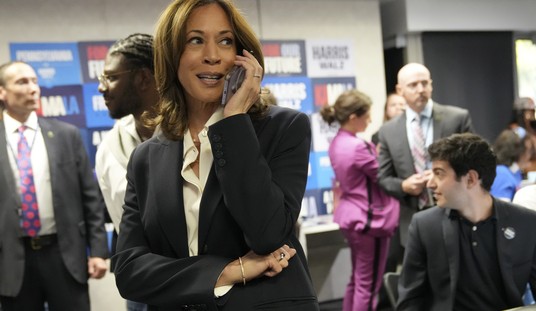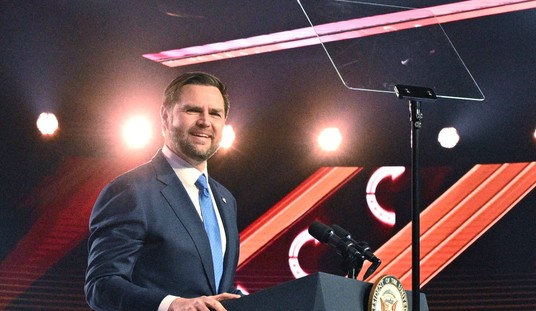
Deputy Attorney General-designate, federal prosecutor Rod Rosenstein, listens on Capitol Hill in Washington, Tuesday, March 7, 2017, during his confirmation hearing before the Senate Judiciary Committee. (AP Photo/J. Scott Applewhite)
Very little media attention has been paid to the role of former Deputy Attorney General Rod Rosenstein, which has never ceased to amaze me. Rosenstein has always been a creature of the swamp. He wrote the initial memo outlining the reasons why former FBI Director James Comey should be fired. After Trump fired him, Comey had given his memos to a professor friend to leak to the New York Times. Once the memo story broke, Rosenstein immediately appointed a special counsel to investigate President Trump. And not just anyone. He broke all of the rules governing special counsels and chose the highly partisan and deeply conflicted Robert Mueller. Rosenstein’s actions have altered the course of the Trump presidency, yet no one questions him.
Anyway, on Wednesday, after much stonewalling, watchdog group Judicial Watch obtained 14 pages of documents through a FOIA request originally filed on September 21, 2018. This was the date the New York Times had reported that a group of high-level DOJ and FBI officials had allegedly discussed the possibility of invoking the 25th Amendment to “remove” President Trump from office in May 2017. During that meeting, the Times claimed that then-Deputy Attorney General Rod Rosenstein had offered to wear a wire to record his private conversations with the President.
The newly released material shows the DOJ’s behind the scenes efforts to control the narrative after this article was published.
According to Judicial Watch, the documents show Rosenstein saying the press would have “difficulty” finding anyone in the DOJ willing to discuss this issue and that officials tried to frame the Times‘ report as “inaccurate” and “factually incorrect.” They also reveal a conversation among DOJ officials about telling the media Rosenstein’s remarks were merely “sarcastic.”
Additionally, we learn that:
After DOJ Public Affairs officer Sarah Isgur Flores had discussed an email exchange with New York Times reporter Adam Goldman with top DOJ officials and Rosenstein’s office, she waited 12 hours to forward the email exchange to DOJ Chief of Staff Matthew Whitaker. Former White House Chief of Staff John Kelly had referred to Whitaker as the president’s “eyes and ears” in the DOJ.
The records include an email from Assistant U.S. Attorney (DOJ/NSD) Harvey Eisenberg to Rosenstein dated September 21, 2018.
Eisenberg writes that Washington Post reporter Ellen Nakashima had called inquiring about the Times’ article. Rosenstein responds: “Thanks! Hopefully we are being successful, and the reporters are having difficulty finding anybody to comment about things. [Remainder of email redacted.]”
Apparently in response to the redacted portion of Rosenstein’s reply, Eisenberg responds, “I’m aware. Besides letting you know, [redacted]. My best to you and the family.” Rosenstein replies, “I don’t mean about me. [Redacted.]”
The DOJ had known about the article on the previous day. Co-author Adam Goldman had emailed Flores to tell her that he and Times writer Mike Schmidt were writing the story and would like the agency to comment on several items. Judicial Watch reports:
The first was, “during a May 16, 2017 meeting of senior federal law enforcement officials, Rosenstein offered to wear a “wire” to record his conversations with Trump and “He also said McCabe could wear a wire.”
In a second request for comment, Goldman alleges that in a separate conversation between Rosenstein and McCabe, they discussed using the 25th Amendment “to remove President Trump” and “Rosenstein said that he may be able to get (then-Attorney General Jeff) Sessions and Kelly to go along with the plan.”
In a third request for comment, Goldman said he’d learned that Rosenstein in a May 12, 2017, conversation at the DOJ Command Center “appeared ‘upset’ and ‘emotional’ over the Comey firing.”
In a fourth request for comment, Goldman said that in a May 14, 2017, conversation with McCabe, “Rosenstein asked McCabe to reach out to Comey to seek advice about appointing a special counsel. McCabe believed that was a bad idea.”
In a fifth and final request for which he sought DOJ comment, Goldman wrote, “Rosenstein considered appointing (former Deputy Attorney General) Jim Cole as the special counsel.”
Flores forwarded Goldman’s emails to “Annie” and “Bill” — apparently White House Deputy Counsel Annie Donaldson and White House Communications Director Bill Shine:
Telling Donaldson, “Boss calling Don re the below – if you think appropriate, share with Don [presumably referring to White House Counsel Don McGahn]”. She tells Shine, “We’ve sent a response from the DAG that’s below and had someone in the room dispute the ‘wire’ part noting the dag was being sarcastic.” She then includes the DAG response, which reads, “The New York Times’s story is inaccurate and factually incorrect. I will not further comment on a story based on anonymous sources who are obviously biased against the Department and are advancing their own personal agenda. But let me be clear about this: based on my personal dealings with the President, there is no basis to invoke the 25th Amendment.”
Shine thanks Flores and asks her to “share with Elliott ASAP.” Flores responds that if Shine is directing her to share with Elliott, “I don’t think I know who that is referring to.” Flores sent that response at 10:09 PM on September 20, but Flores waits until 10:00 a.m. the next day to forward the entire exchange to DOJ Chief of Staff Whitaker, saying: “Should have sent this to you last night.”
A mostly redacted email exchange on the evening of September 20, 2018, shows the efforts of officials in the Public Affairs and DAG’s office to produce a response to the impending news article. DOJ Official Bradley Weinsheimer forwarded to Flores the “DAG response” to the allegations in the article, saying “DAG has cleared this, which is what we just discussed.” He then provides the official DAG response about the allegations over Rosenstein wanting to invoke the 25th Amendment against Trump as being “inaccurate and factually incorrect.” Deputy Attorney General’s office official Ed O’Callaghan responds, “Think good.” The rest of his response is redacted under (b)(5) – deliberative process.
In the final draft of the official DAG response approved by O’Callaghan, the statement is changed from “Based on my dealings with the President, there is no basis to invoke the 25th Amendment” to “Based on my personal dealings with the President, there is no basis to invoke the 25th Amendment.”
Judicial Watch President Tom Fitton commented on these records. He said, “It is remarkable that Judicial Watch has done more to investigate the DOJ/FBI’s discussions about overthrowing President Trump than the DOJ or Congress. These documents essentially confirm the coup discussions about wearing a wire when speaking with President Trump and plans to remove him under the 25th Amendment.”













Join the conversation as a VIP Member